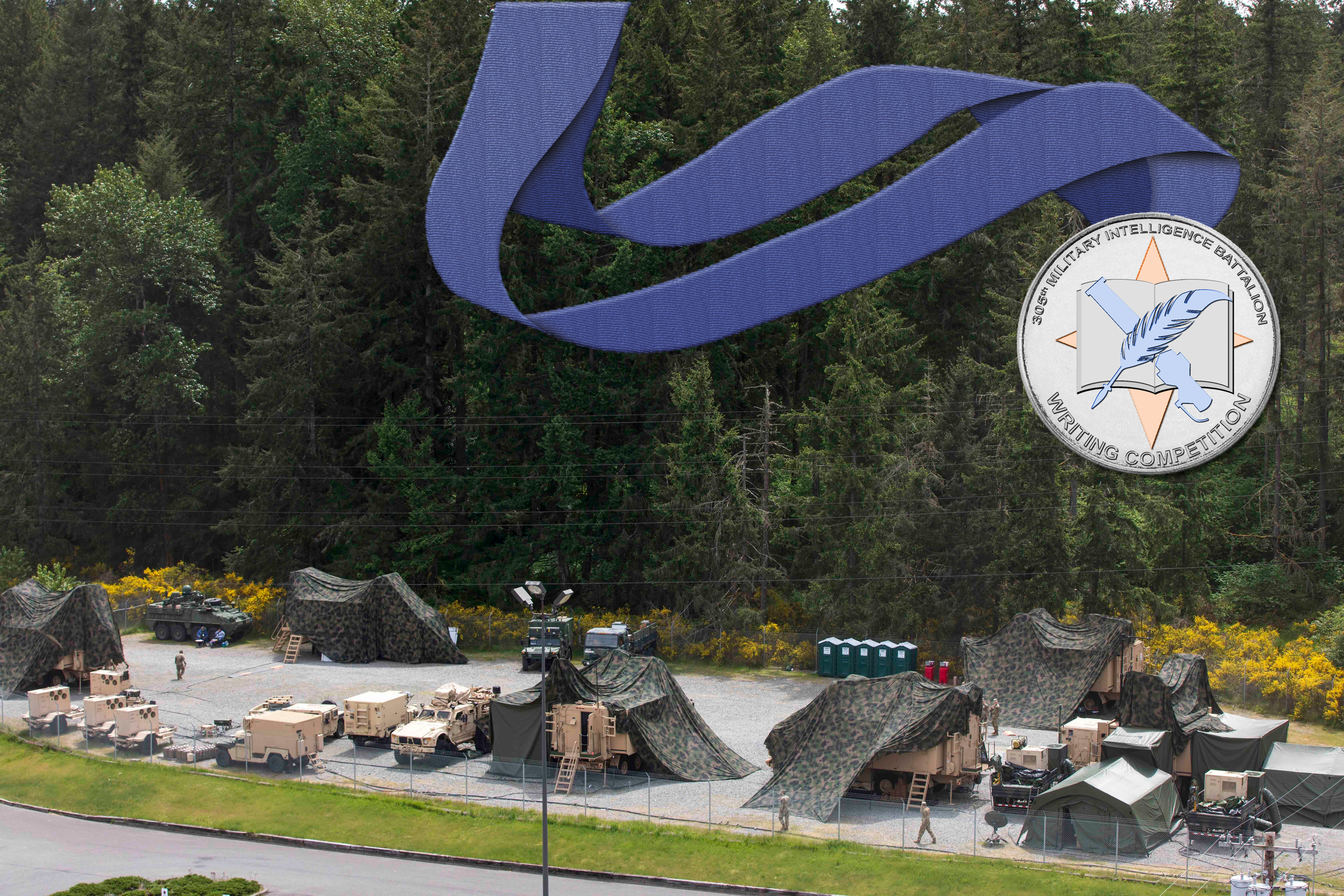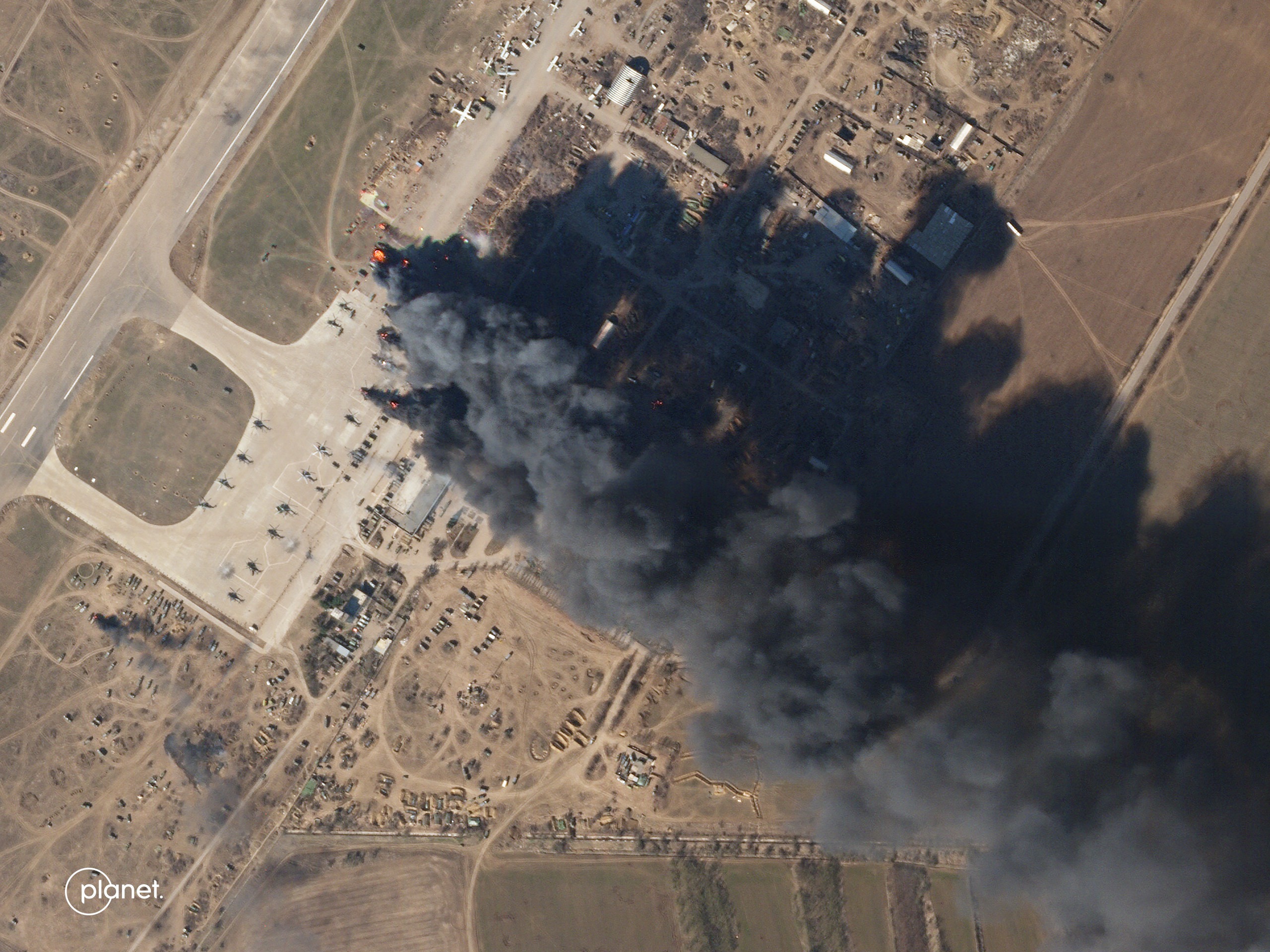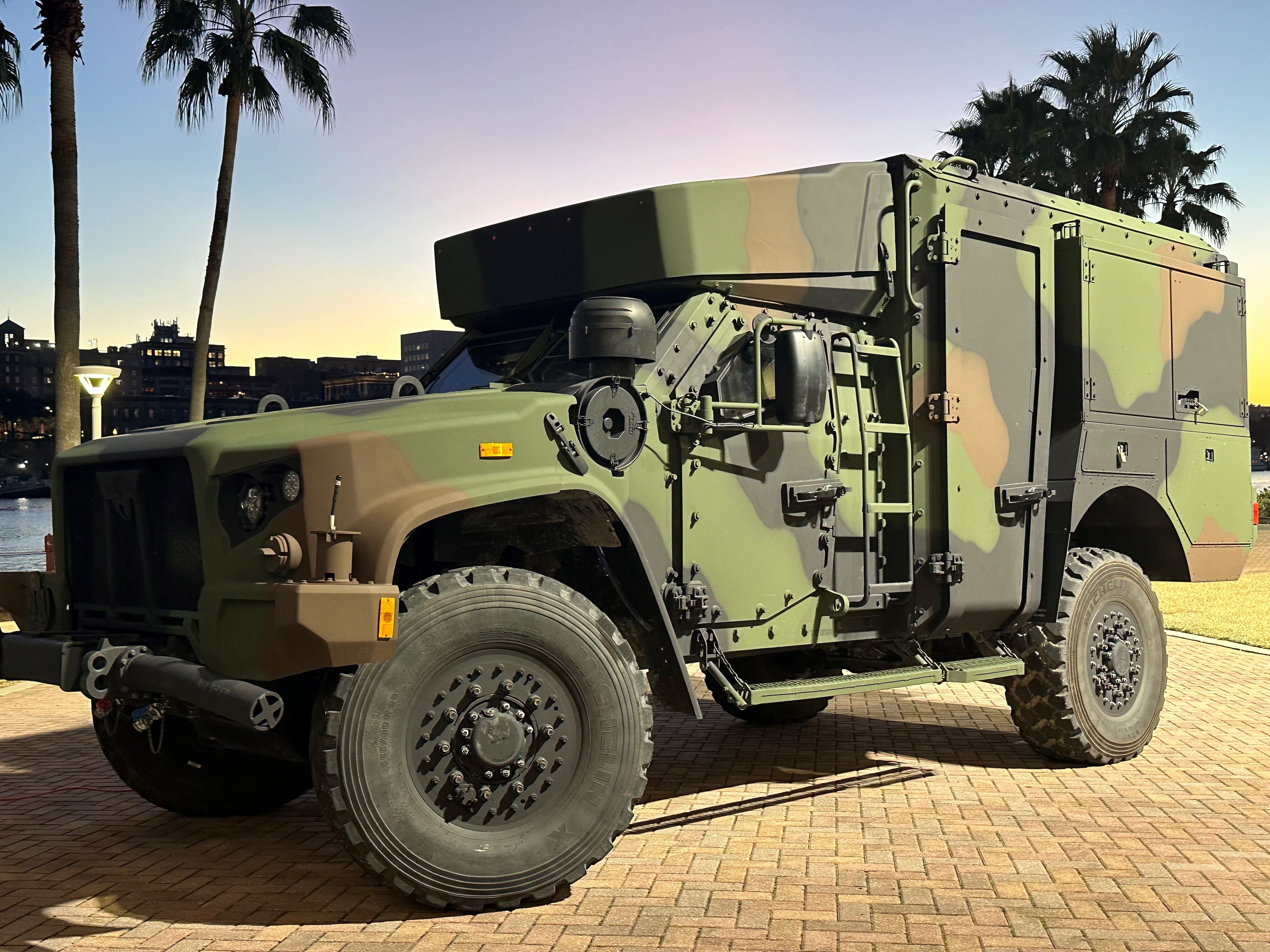U.S. Army Command Post Survivability
The 2nd Stryker Brigade Combat Team, 2nd Infantry Division at Joint Base Lewis-McChord conducts a validation exercise for prototype command post equipment in support of Program Executive Office Command, Control, and Communications-Tactical's Command Post Integrated Infrastructure program. (U.S. Army photo)
Editor’s Note: This article was written in early 2024 as part of a professional writing competition open to the Army Soldiers and civilians of the 305th Military Intelligence Battalion, Fort Huachuca, Arizona. Competitors drew upon their operational and institutional experience as well as subject matter experts from across the Military Intelligence Corps to address challenges facing the intelligence warfighting function. For this competition, writers tailored their articles to the Indo-Pacific Command’s area of responsibility.
Introduction
To address the pacing threat posed by China in the Indo-Pacific Command (INDOPACOM) region, the United States Army must increase command post (CP) survivability without neglecting the needs of the intelligence warfighting function. In his 2024 Military Review article, Ian Sullivan noted, “In 2015, China’s People’s Liberation Army (PLA) embarked upon the most ambitious, extensive, and far-reaching reform and modernization program in its history.”1 China’s rapid military modernization also requires the United States Army to adapt, embracing smaller, more mobile CPs with intelligence architecture, dedicated bandwidth, and reduced electromagnetic signatures to maintain critical mission command and intelligence functions.
Command Posts and the Warfighting Functions
Army Doctrine Publication 6-0, Mission Command: Command and Control of Army Forces, describes the importance of U.S. Army CPs: “At every echelon of command, each commander establishes a command and control system—the arrangement of people, processes, networks, and command posts that enable commanders to conduct operations.”2 CPs provide a physical location from which to exercise command and control, one of the six warfighting functions, but this is not accomplished without support from the other warfighting functions.
Winning conflicts in a multidomain operational environment requires the convergence and synchronicity of the fires, sustainment, protection, movement and maneuver, and intelligence warfighting functions to establish combat power through command and control.3 In other words, these separate warfighting functions work together as a dynamic team, prioritizing tasks to defeat the Nation’s enemies. The photo below illustrates the combat power model, which clarifies how the warfighting functions work together.
Combat Power Model4
The intelligence warfighting function supports operations, providing the commander and staff the information necessary for informed decision making. Key tasks of this warfighting function include intelligence support to force generation, support to situational understanding, conducting information collection, and providing intelligence support to targeting.5
Today, CPs provide commanders with the benefit of up-to-date tactical information and intelligence-sharing capabilities among critical staff sections. Support requirements for modern CPs include radio frequency-emitting antennas, numerous generators, and a variety of vehicles, all of which create an easily identifiable physical and digital footprint. This type of CP may have been acceptable when combating technologically inferior adversaries, as we saw during the counterinsurgency operations in Iraq and Afghanistan. However, it becomes more problematic when faced with adversaries capable of multidomain operations, such as China, which “has focused on disrupting US command-and-control capabilities. . . . China could employ a variety of means, including jamming, cyberwarfare, and attacks on communications satellites.”6 Disrupting a CP disrupts the “brains” of an operation, which can lead to uncoordinated lines of effort. The United States Army must concentrate on the survivability of CPs when considering the threat China poses to the INDOPACOM region.
People’s Liberation Army Modernization
The People’s Republic of China (PRC) expends significant effort toward observing armed conflict elsewhere in an effort to modernize their forces: “What gives China, the second-largest military spender in the world . . . the upper hand is the fact that it has been studying the American way of war for a long time, formulating its own grand strategy and modernizing its military.”7 The bottom line is that the PRC is now considered by many in the intelligence community to be America’s foremost pacing threat.
Chinese scrutiny of the American way of war reveals the value of modernizing the footprint and capabilities of CPs. For example, discussing China’s interest in the United States military’s Joint All-Domain Command and Control (JADC2) project, which aims to integrate its sensors and weapons in a robust network using artificial intelligence, Stew Magnuson writes in his 2023 Business Insider article, “The People’s Liberation Army is working on its own version of JADC2 while simultaneously seeking ways to disrupt or destroy the U.S. system.” Magnuson further notes that the PRC will most likely continue to focus on technology that would identify signatures and networks associated with United States CPs.8 The PLA recognizes the importance of shared intelligence supporting effective CPs.
Once command and control nodes are identified, the PLA can target United States Army CPs throughout INDOPACOM areas of operation by suppressing information systems or using lethal strikes in the same way that Ukraine did “in summer 2022 when it used new U.S.-supplied HIMARS [High Mobility Artillery Rocket System] GPS [Global Positioning System]-guided rockets to target Russian command posts near the front lines,” thereby exploiting the perceived technological advantage of the Russian Army. Ukraine capitalized on the resulting disruption to retake much of its territory.9
The photo below shows an example of a Russian CP at Kherson International Airport decimated by Ukrainian rockets. The Russian Army likely underestimated Ukraine’s intelligence gathering and capability to target large static command and control nodes. This imagery clearly demonstrates the dangers of not investing in CP survivability against adversaries.
Satellite imagery from 15 March 2022 shows a large fire and a number of destroyed aerial assets at Russian-occupied Kherson International Airport, Chornobaivka, Ukraine, following a Ukrainian attack. (Image © 2022 Planet Labs PBC)
Increasing U.S. Army Command Post Survivability
The Army Futures Command’s Command and Control Cross-Functional Team, one of six cross-functional teams, is working toward smaller, more mobile CPs to increase survivability and provide the technical infrastructure necessary for commanders to make timely decisions. According to the Program Executive Office Command, Control, Communications, and Network, aligning with the Army’s priorities for streamlining and modernizing tactical communications networks, the current “Command Post Integrated Infrastructure (CPI2) program will transition to the Command Post Modernization (CPMod) program.”10 These CP designs incorporate innovative technologies that will, among other things, support Army Network direction and strategic objectives, expand expeditionary capabilities, improve the tactical computing environment, and incorporate energy-informed operations.11
CPs may be able to balance lethality, speed, and precision without sacrificing the network infrastructure necessary for intelligence sharing. The CPI2 program recognizes this balancing problem and is developing solutions for the division, brigade, and battalion using feedback from Soldiers.12 The redesigned CPs drastically decrease set-up and tear-down times while providing necessary network support for intelligence architecture. “As the program shifts to its next iteration . . . it will focus on including more flexible integrated command post capabilities.”13
The Army’s Technical Exchange Meeting 11, held in Savannah, GA, December 12-13, 2023, featured a prototype display of a Joint Light Tactical Vehicle integrated with Command Post Integrated Infrastructure capabilities. (U.S. Army photo by Paul Tardy)
It is important to remember that command and control within CPs at each echelon may look different. The CPMod solution is modular and tailorable, and higher echelons require a distinct level of information fusion. For example, “Effective support area intelligence operations require the centralization of dedicated personnel and military intelligence (MI) equipment. To meet the current need, FM 3-0, Operations, established the rear command post, formerly called the support area command post (SACP) for corps and division headquarters.”14 When facing an enemy like the PRC, the rear CP and subordinate commands must be more agile.
Project Manager Mission Command develops mission command capabilities across the warfighting functions. The larger footprint of a division- or corps-level CP can become more mobile using the integrated mission command capabilities provided by the Command Post Computing Environment and the Mounted Mission Command. Supported by the Army’s Common Operating Environment, these interoperable mission command and situational awareness capabilities provide several essential, easy-to-use applications to include a common operational picture through a single mission command suite operated and maintained by Soldiers.15
This capability has already been tested at the National Training Center at Fort Irwin, California. It may help counter the PLA’s recent technological advances in identifying adversary command and control nodes like the forward or rear CP. The Command Post Computing Environment addresses intelligence sharing challenges that likely will be encountered in the INDOPACOM geography when occupying non-contiguous areas of operation.
Soldiers with the 2nd Stryker Brigade Combat Team, 2nd Infantry Division work inside a Mission Command Platform during Command Post Integrated Infrastructure training exercises at Yakima Training Center, Joint Base Lewis-McChord, in April-May, 2021. (U.S. Army Photo)
Intelligence Architecture Considerations
Intelligence architecture supporting mobile CPs designed to counter China in the INDOPACOM region will not likely be one size fits all. Still, it should be designed to be simple, intuitive, integrated, interoperable, and scalable to suit the needs of multidomain operations at different echelons.16 This will help to counter the PLA’s ability to employ antiaccess and area denial activities, such as jamming, cyber warfare, and attacks on communications infrastructure, intended to disrupt intelligence operations. A robust intelligence architecture enhanced by the Command Post Computing Environment will enable information sharing and more agile CPs.
Intelligence collection management supported by the Command Post Computing Environment will be a critical capability in the INDOPACOM region. There is a high probability that Chinese military operations will focus on paralyzing adversary information systems, and the Command Post Computing Environment will provide survivability options for the United States Army. To counter China’s focus on manipulating the electromagnetic spectrum, “The U.S. Army must expedite and prioritize the integration of collection management and sensor management tasks and capabilities supporting multidomain operations (MDO) capable forces in joint and coalition environments under joint all-domain command and control.”17
Introducing mobile CPs with an intelligence architecture capable of integrating legacy systems for intelligence support and collection management will be important in meeting modern threats like the PRC. In the July 2020 Military Intelligence Professional Bulletin, Michael Kossbiel noted that “applications on commercial off-the-shelf laptops will replace Command Post of the Future and Distributed Common Ground System-Army laptops.…The planned future state converges all warfighting functions’ Army Battle Command Systems programs of record onto one suite of software and one server.”18
One example of updated software that will support modern CPs facing threats like China in the INDOPACOM is the Army Intelligence Development Program. Implementation of this program will require adjustments to the current intelligence architecture within the proposed three-phase, two-year implementation plan.
Conclusion
China’s PLA will likely continue to invest in its ambitious modernization initiative in an effort to compete with the United States Army. Emphasizing how intelligence supports CP survivability increases the chances of winning a conflict with China in the INDOPACOM region. Intelligence collection management through commercial off-the-shelf enhancements and adaptive intelligence architecture through innovative field systems will give the intelligence warfighting function a more comprehensive suite of tools to support CP survivability.
Endnotes
1. Ian M. Sullivan, “Three Dates, Three Windows, and All of DOTMLPF-P: How the People’s Liberation Army Poses an All-of-Army Challenge,” Military Review 104, no.1 (January-February 2024): 14-25, https://www.armyupress.army.mil/Journals/Military-Review/English-Edition-Archives/January-February-2024/Sullivan/.
2.Department of the Army, Army Doctrine Publication (ADP) 6-0, Mission Command: Command and Control of Army Forces (Washington, DC: U.S. Government Publishing Office [GPO], 31 July 2019), 1-20.
3. Ibid., 1-19.
4. Figure 1-2 from Department of the Army, ADP 6-0, Mission Command, 1-20.
5. Department of the Army, ADP 2-0, Intelligence (Washington, DC: GPO, 31 July 2019), 2-2–2-3.
6. Michael Peck, “Ukraine’s Attacks on Russian Commanders Have the US Army Worried about its Own ‘Fat and Ponderous’ Command Posts,” Military & Defense, Business Insider, July 6, 2023, https://www.businessinsider.com/ukraine-attacks-on-russia-us-army-command-post-vulnerability-2023-7.
7. Hyun Ji Rim, “The US-China Strategic Competition and Emerging Technologies in the Indo-Pacific Region: Strategies for Building, Dominating, and Managing Networks,” Asian Perspective 47, no. 1 (Winter 2023): 1-25, https://dx.doi.org/10.1353/apr.2023.0000.
8. Stew Magnuson, “SPECIAL REPORT: China Pursues Its Own Version of JADC2,” National Defense, July 13, 2023, https://www.nationaldefensemagazine.org/articles/2023/7/13/china-pursues--its-own-version-of--jadc2.
9. Peck, “Ukraine’s Attacks on Russian Commanders.”
10. “Command Post Modernization,” Project Manager Interoperability, Integrations and Services, Organizations, Program Executive Office Command, Control, Communications, and Network (PEO-C3N), n.d., https://peoc3n.army.mil/Organizations/PM-Interoperability-Integrations-and-Services/Command-Post-Modernization/.
11. Lisa Heidelberg and Kathryn Bailey, “Command, Unencumbered,” Army AL&T, April-June 2018, 86–92, https://asc.army.mil/web/news-alt-amj18-command-unencumbered/.
12. “Command Post Modernization,” Project Manager Interoperability, Integrations and Services, Organizations, PEO-C3N, n.d., https://peoc3n.army.mil/Organizations/PM-Interoperability-Integrations-and-Services/Command-Post-Modernization/.
13. Mollie Ryan, “Future Conflicts Demand Flexible and Mobile Command Posts,” U.S. Army website, February 20, 2024, https://www.army.mil/article/273842/future_conflicts_demand_flexible_and_mobile_command_posts.
14. Julee R. Thomas, “The Vitality of Synchronized Intelligence Operations for a Division Support Area Command Post,” Military Intelligence Professional Bulletin 47, no. 2 (April–June 2021): 36, https://mipb.ikn.army.mil/media/myqf4tqu/2021-04-06-the-vitality-of-synchronized-intelligence-operations-for-a-division-support-area-command-post.pdf; and Department of the Army, Field Manual 3-0, Operations (Washington, DC: GPO, 21 March 2025), 79.
15. “Program Manager Mission Command,” Organizations, PEO-C3N, n.d., https://peoc3n.army.mil/Organizations/PM-Mission-Command/; “Tactical Mission Command,” PM Mission Command, Organizations, PEO-C3N, n.d., https://peoc3n.army.mil/Organizations/PM-Mission-Command/Tactical-Mission-Command/; “Mounted Mission Command,” PM Mission Command, Organizations, PEO-C3N, n.d., https://peoc3n.army.mil/Organizations/PM-Mission-Command/Mounted-Mission-Command/; and Kris Osborn, “Common Operating Environment Assists Army Modernization,” U.S. Army website, February 19, 2013, https://www.army.mil/article/96650/Common_Operating_Environment_assists_Army_modernization/.
16. Donald Beattie and Robert Coon, “Improving Intelligence Sharing,” Military Intelligence Professional Bulletin 44, no. 4 (October–December 2018): 26, https://mipb.ikn.army.mil/media/1uodqayc/mipb-2018-10-12-full-issue.pdf#view=fit&page=27.
17. Michael T. Kossbiel, “The Future of Collection Management in Multi-Domain Operations,” Military Intelligence Professional Bulletin 46, no. 3 (July–September 2020): 30, https://mipb.ikn.army.mil/media/lnfb1rqc/2020-07-09-the-future-of-collection-managament-in-multi-domain-operations.pdf.
18. Ibid.
SSG David Ball is currently an instructor at the Intelligence Analyst Basic Course at Fort Huachuca, AZ. He has served in the Active Duty Army, Air Force Reserves, and Army National Guard. SSG Ball’s previous assignments include serving as an intelligence team leader for the 1st Combined Arms Battalion, 252nd Armored Regiment, North Carolina Army National Guard, analysis and control element intelligence team leader for the XVIII Airborne Corps, and all-source analyst for U.S. Central Command. He received a bachelor’s degree cum laude in intelligence from American Military University with intelligence fundamentals professional certification.





